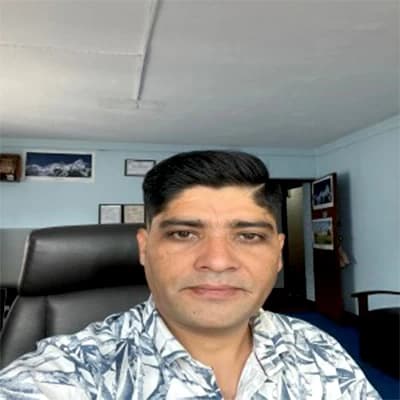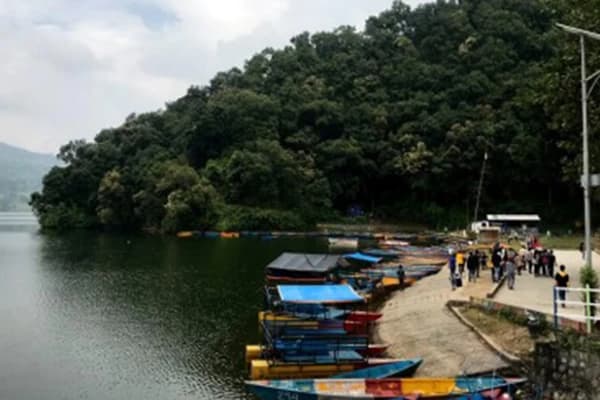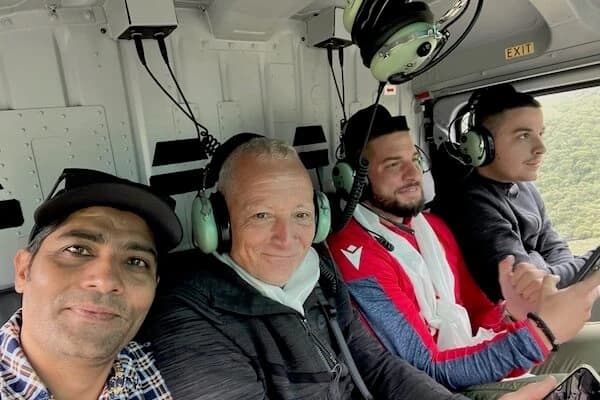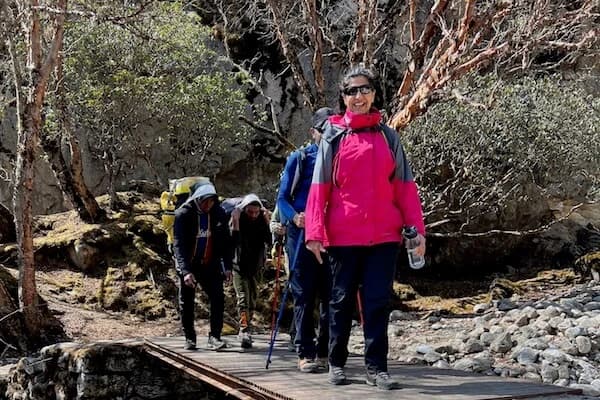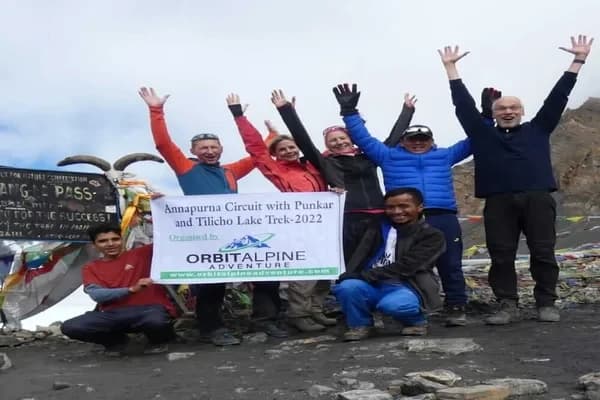Major Attractive Area of Dolpo Region:
Shey Gompa
Shey Gompa at 4,200m is an 11th century Tibetan Buddhist monastery locate in the heart of divine Inner Dolpo valley. Trekking to Inner Dolpo Shey Gompa, you must cross Kanga La (5,151m), one of the highest passes in the trans-himalayan region. From the gompa, you can get a majestic view of the snow-white mountains and tantalizing landscapes far and wide.
Shey Phoksundo Lake
An alpine freshwater Shey Phoksundo Lake, at an altitude of 3,611.5m (11,849ft) is one of the major attractions of Dolpo Region. Shey Phoksundo Lake trekking confers you to see the blue and green water of the lake which is a sacred lake for the Bonpo religion followers. Bonpo followers believe that there is a palace and the gang of witchdoctors deep down the water for helping them in hard times. As Shey Phoksundo Lake is situated in the alpine climatic region and the water is very cold, it supports no organisms. There is a historically important 900-year old Bonpo monastery named Tshowa Gompa on the ridge of the lake. On the holy occasions, the devotees of Bonpo religion visit for worshipping their deity every year.
Shey Phoksundo National Park
The largest national park and only one located in the trans-Himalayan region, Shey Phoksundo National Park covers the majority of land of Dolpo Region. Located in Lower Dolpo Region, the park is a haven for varieties of flora and fauna befitting in the high altitude. The park inhabits the animals like blue sheep, marmot, musk deer, Himalayan black bear, etc. and six species of reptiles. Similarly, you can find about 29 species of butterflies and over 200 species of birds in Shey Phoksundo National Park. Trekking to Shey Phoksundo National Park bestows you a rare opportunity for birds and butterflies watching as well.
As the park lies in the trans-Himalayan region, hardly 5% of land is occupied by forests with variety of plants. In the upper part of the park, rhododendron, caragana shrubs, salix, juniper, white Himalayan birch are found. Likewise, in Suligad Valley, the plant species like silver fir, blue pine, hemlock, cedar, bamboo and poplar are found. The park is a home for Yarsagumba (Ophiocordyceps sinensis), a medicinal herb harvested it in spring and found in trans-Himalayan belt.
Trekking to Dolpo Region is mostly camping trekking because the infrastructures of tourism are not fully developed on the way. On the trekking route to Dolpo Region, the local people have initiated homestay services to a limited number of trekkers. Facilities of teahouses are in the phase of expansion along with the growing flow of trekkers to Inner Dolpo Region. Therefore, you can contact to Orbit Alpine Adventure for the proper guidance regarding camping trekking.
The socio-cultural practice of a place and a community of people differs from the other as per their religion or ethnicity. Polyandry, a system in which a woman has more than one husband is a typical culture in the Dolpo Region. This unique culture is gradually being changed along with the passage of time and knowledge of concerned people. Similarly, another typical culture of the Dolpo Region is the funeral practice that is quite distinct from other parts. Here, when someone dies, the Lama (priest) goes through the horoscope of the dead and determines the funeral rituals. Some of the dead bodies are cremated while others are burnt into ashes. And to your wonder, others are cut into pieces and scattered in an open ground for the vultures and other animals’ feed!
Everyday Itinerary:
Day 01: Arrival in Kathmandu (1,350m/4,429ft)
The mediator of the trekking agency will receive you at the Tribhuvan International Airport (TIA) and accompany you to the hotel around Kathmandu.
Day 02: Sightseeing in Kathmandu and preparing for trekking
Next morning, the representative of the agency will guide you to different cultural, historical and religious sites located in the Kathmandu Valley. You can visit Kathmandu Durbar Square, Patan Durbar Square, Swayambhunath Temple, Pashupatinath Temple recognized by the UNESCO World Heritage Sites. The guide will give you brief information about the trekking route, trekking destination, legal documents and other required materials.
03: Flight to Nepalgunj (150m/492ft)
Today, you will fly to Nepalgunj, a city conjoining the Indian border from TIA to reach within 50 minutes. During the flight, you can see the magnificent scenic beauty of forests and landscapes, snowy mountains like Manaslu and Annapurna. Your guide will lead you to the booked hotel for your rest. You can take a rest or take a stroll round the Nepalgunj city for sight scene like Bageshwori Temple and other areas.
Day 04: Flight to Juphal and trek to Suligad Ghat (2,080m/6,824ft)
Now, you will take a mountain scenic flight of about 45 minutes to Juphal Airport, Dolpo from Nepalgunj. The alluring view of snowcapped mountains, green and live landscapes and High Himalayan villages makes your flight quite memorable. After you are landed on Juphal Airstrip, you start your first step towards Dolpo Region trekking. You spend your night at Sulighat, a small valley surrounded by hills situated on the banks of the Thuli Bheri River. If you need something to buy for your trekking, you can walk fifteen minutes to reach Dunai, the headquarters of the district.
Day 05: Trek to Chhekpa (2,678m/8,786ft)
On this day, you will trek for about six hours to reach Chhekpa for the night rest. You will descend through a plot of vegetable farming until you cross a suspension bridge over the Thuli Bheri River. Across the bridge, other than the SAARC countries citizen will have to take Shey Phoksundo National Park permit by paying certain amount.
Day 06: Trek to Palam (3,397m/11,145ft)
This is the day you have to walk about 7 hours, one of the longest hours during the Dolpo Region trek. You will follow the rugged trail up and down along the banks of the Thuli Bheri River. You have to cross Reechi village where you will see people grazing their yaks to reach Palam. Here you set up your tent house in the beautiful forests with the sounds of birds and animals for night rest.
Day 07: Trek to Shey Phoksundo Lake (3,600m/11,811ft)
Today, you will trek up to an alpine freshwater Shey Phoksundo Lake to spend the night in your tent set close to it. You can enjoy the night in bewilderment by looking at the turquoise water of Shey Phoksundo Lake and forget the tiredness. The major attraction of trekking to Shey Phoksundo Lake is Phoksundo waterfall, one of the highest in Nepal.
Day 08: Exploration around Shey Phoksundo Lake for Acclimatization
On this day, you will be exploring the magnificent view and captivating landscape around Shey Phoksundo Lake. Close to the lake, you will visit the 900-years old Tshowa Gompa, ‘Ringmo’ in local dialect, reflecting Bonpo religion and its deity. You will take short hiking to Ringmo Village for acclimatization as preparation for further ascent.
Day 09: Trek to Sallaghari (3,700m/12,139ft)
Today, you will trek to Sallaghari following the rocky trail going across the pine forests with variety of wildlife. You will enter into the Inner Dolpo Region, the restricted area for the trekkers paying extra fees. You can have a view of Mt. Kanjirowa (6,612m) and other snow-white mountains from Ringmo viallge. The hidden valleys and lifestyle of Upper Dolpo region in the 1999 film “Himalaya Caravan” by a French director Eric Valli.
Day 10: Trek to Lar Tsa (4,120m/13,517ft)
You will ascend towards Lar Tsa by following steep rocky trail slowly and steady. This region is quite barren due to the snowfall during winter and lack of vegetation. You will spend the night there in tent in the lovely surrounding.
Day 11: Trek to Shey Gompa (4,343m/14,249ft) through Nangda La
Today, you will trek to Shey Gompa Village by crossing a popular pass of the Upper Dolpo Region, Nagda La (5,320m). Shey Gompa, named after a 11th century monastery Shey Gompa, is a small village having a few people in traditional houses. Shey Monastery, which reflects the Tibetan Buddist culture, is the focal point of the village.
Day 12: Shey Gompa Exploration for Acclimatization
This is your second day for acclimatization during the Inner Dolpo Region Trekking in a pristine rustic valley. You can spend the day by knowing about the culture, tradition, lifestyle and other information about the village and people in it. You can take a round of Shey Gompa by spining the prayer wheels set at the base surrounded by the prayer flags. You can see the Crystal Peak, the sacred mountain of people living in the Upper Dolpo Region.
Day 13: Trek to Namguna Gaun 4,360m/14,304ft) via Saldang La
By walking through the rocky trails crisscross across the juniper forests, you will reach Namdduna Gaun for your night stay. On the way, you will have to cross Saldang La (5,200m), one of the high passes of the Inner Dolpo Region trekking route. You can find yaks and sheep grazing in the pastures that you may feel a little happier. In Namduna Gaun, you can visit Namgung Gompa built in a red stone structure just like Shey Gompa.
Day 14: Trek to Saldang (3,770m/12,369ft)
Now starts trekking route to Lower Dolpo Region that you need to descend to Saldang Village for the night rest. This village is situated at an elevation of 4,700m and one among the biggest in Lower Dolpo Region. You can see that the village is prosperous in agricultural products and being the years old trading route to Tibet.
Day 15: Trek to Yangze Gompa (3,855m/12,648ft)
Today, you will be walking along the banks of the Nang Chu River mostly and partly the Panzang River to reach Yanze Gompa. Erected as Bonpo monastery, this lies in the least explored northern part f Dolpo Region. You spend the night in the tented camp in the lap of Himalayan terrain.
Day 16: Trek to Sibu (3,942m/12,933ft)
Even though two trails leading to Sibu from Yanze Gompa, you follow the shorter one going back through Saldang village. You walk through the river bed witnessing the field with terraced farming, heaps of mani (sacred for Buddhists) stones on the way. You will go across Chaiba Village having nearly 400 dwellers in it and reach a small village Sibu for the night station.
Day 17: Trek Jeng La Phedi (4,369m/14,334ft)
To reach Jeng La Phedi, you have to follow the banks of Nam Khong Stream towards the eastern side. You will spend the night at the bottom of one of the high passes in the Dolpo Region.
Day 18: Trek to Tokyu Gaun (4,369m/14,334ft) via Jeng La
By following the crisscross rocky trail and passing Jeng La at 4,480m (14,698ft), you will escend to Tarap Valley. Tarap is a beautiful valley expanded in about twenty kilometers along the banks of Tarap Cho River. As the river basin, the soil is fertile and suitable for agricultural products, so nearly ten small clustered villages are found here. The valley is surrounded by tall mountains and forests having different species of plants and wildlife. You will spend the night camping in Tokyo at an elevation of 4,240m.
Day 19: Trek Dho Tarap (4,090m/13,419ft)
Today, you will descend to Dho Tarap by following the Tarap Chu River downhill passing through mani walls and some Chortens. Dho Tarap is a small village having about twenty-four houses confined by a fence made up of irregular stones. People here follow both Buddhism and Bonpo religions and visit their own shrines. You can visit the Buddhist Gompa and the Lama who has his private monastery and thanka paintings.
Day 20: Acclimatization in Dho Tarap (4,090m/13,419ft)
Today, you spend the day and night in Dho Tarap for the purpose of acclimatization. You can interact with the local residents about their culture, tradition, lifestyle and occupation. Similarly, you can take a short hiking to a Bonpo Monastery at a distance of 40 minutes’ walk.
Day 21: Trek to Tarap Khola (3,800m/12,467ft)
Now, you will descend from Dho Tarap by walking just above the treeline through the valley which contracts towards a gorge. You can encounter with the herds of blue sheep and other wildlife species along the trail downwards. You will stop your trekking at the junction of the Tarap Chu Khola and the Lang Khola to spend the night. Also called Kamakharka at an elevation of 3,800m, you can see the forests with different wildlife from your tent house.
Day 22: Trek to Khanigaun (2,550m/8,366ft)
On this day, by walking down along the banks of the Tarap Chu Khola just as a gorge, you come to Khanigaun. You can feel the taste of natural beauty and landscapes during the walk. You will set up your camp here to spend the night for rest.
Day 23: Trek to Tarakot/2,281m/7,484ft)
Our camping destination for today is Tarakot, a small town on top of a foothill. The local people call it ‘Dzong’ meaning ‘fort’ in their dialect. You can visit Sandul Gompa just 8 km away from Tarakot to the eastern side. Instead of Tarakot, you can set up you camp at the junction of the Barbung Khola and the Tarap Chu Khola. In this riverside, you can find good spot for cooking and clean toilets for the environmental sanitation.
Day 24: Trek to Dunai (2,140m/7,021ft)
Along the bank of the Barbung Khola, you will reach Dunai by crossing a small valley in the alpine region.
Day 25: Trek to Juphal
Today is the last day for walking of the Dolpo Region Trek to reach Juphal Airport to catch up the flight next morning. You can celebrate your successful completion of the Lower and Upper Dolpo Region Trekking to make more memories for life.
Day 26: Flight to Kathmandu via Nepalgunj
You will board on a plane and fly to Kathmandu via Nepalgunj Ranjha Airport. After arriving at your hotel, you can either take rest or visit different sites of Kathmandu. And you can also go shopping to pack various souvenirs to your people back in your homeland.
Day 27: Final Departure or Set another plan
Now, you have completed the 27 days’ Dolpo Region Trekking and experience the major attractions of Dolpo Region trekking. The representative leads you up to the Tribhuvan International Airport for bidding farewell if you are returning your country. And if you have time to stay in Nepal, you can plan further for other wonderful memories in Nepal.
Note: For a customized trekking to Dolpo Region, Dolpo Region trekking cost and other information, you can contact Orbit Alpine Adventure.

